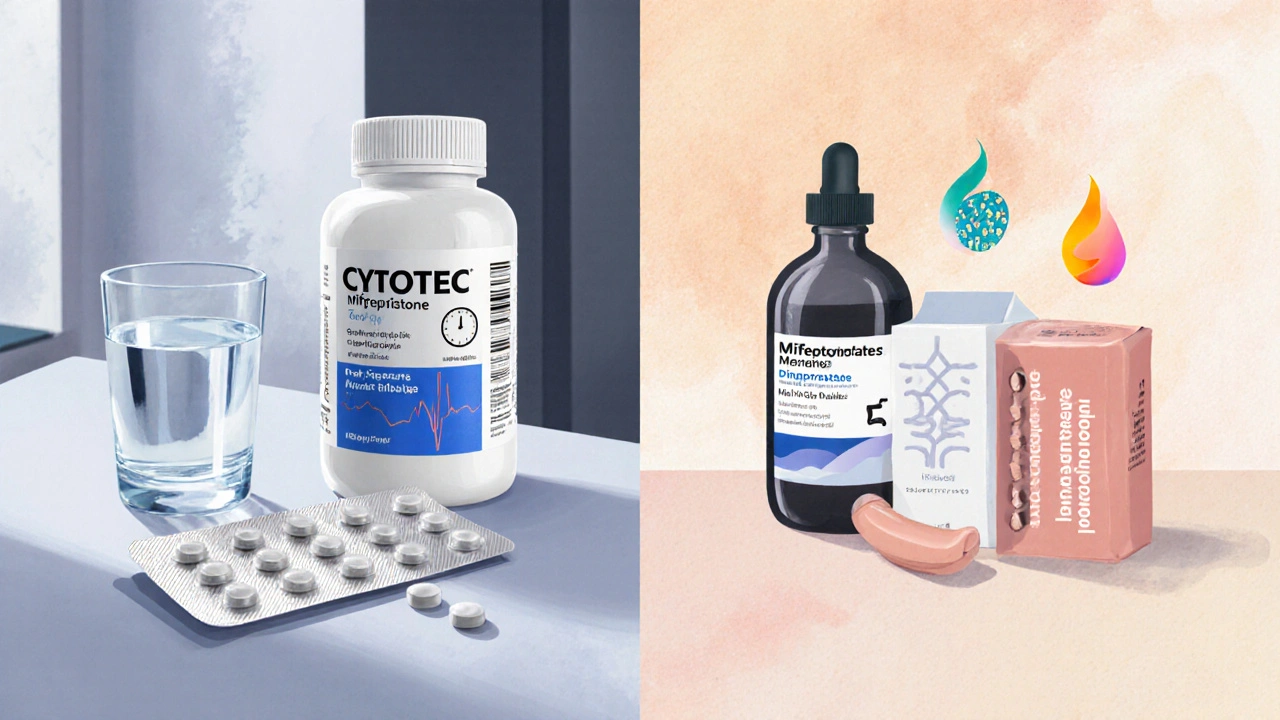Ulcer Treatment Options: What Works and Why
When it comes to ulcer treatment options, the collection of medical and lifestyle steps used to heal or control stomach and duodenal ulcers. Also known as ulcer therapies, this field covers drugs, diet tweaks, and procedural tools that target the root causes of ulcer pain. A key driver of many ulcers is H. pylori infection, the bacteria that inflames the lining and starts the ulcer cycle. Another cornerstone is proton pump inhibitors, medications that shut down acid production and give the tissue a chance to repair.
How Antibiotics and Endoscopy Shape the Treatment Plan
Effective ulcer therapy often requires eradication of H. pylori, and that means a combo of antibiotics. A typical regimen pairs clarithromycin with amoxicillin, plus a proton pump inhibitor for two weeks. This antibiotic triple‑attack clears the bacteria, stops ongoing damage, and boosts the success of acid‑blocking drugs. Meanwhile, endoscopy provides a direct look at the ulcer, confirming its size, depth, and whether there’s bleeding. Doctors use that visual info to decide if a stronger PPI dose, a different antibiotic mix, or even a procedural intervention is needed.
Beyond antibiotics, other drug classes play supporting roles. H2‑blockers such as ranitidine lower acid but not as powerfully as PPIs, making them useful for mild cases or when a patient can’t tolerate a PPI. Sucralfate coats the ulcer like a protective shield, allowing new cells to grow underneath. Antacids offer quick, short‑term relief by neutralizing existing acid, which can ease sudden pain while longer‑acting meds take effect. Each of these options fits into the larger ulcer treatment options toolbox, giving clinicians flexibility based on severity and patient preference.
Lifestyle changes also influence ulcer healing. Eating smaller, more frequent meals reduces stomach workload, while cutting back on alcohol, caffeine, and especially smoking removes irritants that keep acid levels high. A diet rich in fiber, fruits, and vegetables supplies nutrients that support mucosal repair. Stress management—through exercise, mindfulness, or counseling—helps lower cortisol‑driven acid spikes. These non‑drug measures don’t replace medication, but they amplify the benefits of the pharmacologic side of treatment.
When ulcers are large, bleed, or fail to heal after several weeks, more aggressive steps may be needed. Endoscopic therapy can stop bleeding with clips or cauterization. In rare, refractory cases, surgery—such as vagotomy or partial gastrectomy—removes part of the acid‑producing stomach tissue. However, modern drug regimens and lifestyle tweaks resolve the vast majority of cases, keeping surgery as a last resort.
All of these pieces—antibiotic combos, proton pump inhibitors, H2‑blockers, protective agents, endoscopic assessment, and lifestyle tweaks—interlock to form a comprehensive approach. Understanding how each element fits helps patients and clinicians pick the right mix for fast, lasting relief. Below you’ll find a curated list of articles covering everything from buying generic meds online to managing related conditions like vomiting, insomnia, and anxiety. Dive in to see how each topic ties back to the broader goal of effective ulcer care.

